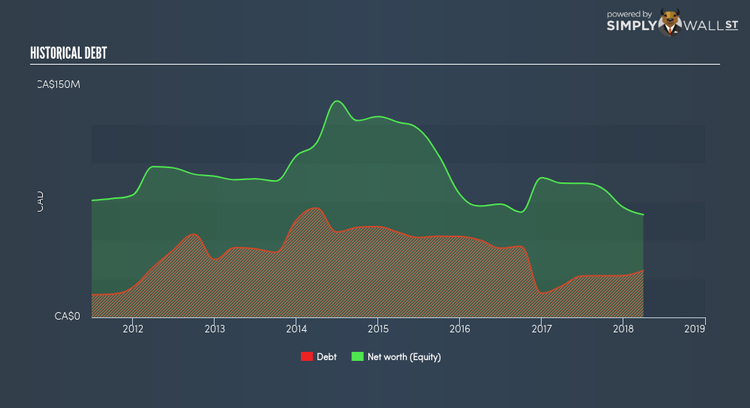Marquee Energy Ltd (CVE:MQX): Time For A Financial Health Check

Marquee Energy Ltd (TSXV:MQX) is a small-cap stock with a market capitalization of CA$17.43M. While investors primarily focus on the growth potential and competitive landscape of the small-cap companies, they end up ignoring a key aspect, which could be the biggest threat to its existence: its financial health. Why is it important? Oil and Gas companies, in particular ones that run negative earnings, are inclined towards being higher risk. Assessing first and foremost the financial health is vital. Here are a few basic checks that are good enough to have a broad overview of the company’s financial strength. Though, since I only look at basic financial figures, I’d encourage you to dig deeper yourself into MQX here.
How does MQX’s operating cash flow stack up against its debt?
Over the past year, MQX has ramped up its debt from CA$15.63M to CA$27.04M , which is made up of current and long term debt. With this increase in debt, MQX currently has CA$1.92M remaining in cash and short-term investments for investing into the business. Additionally, MQX has generated cash from operations of CA$1.66M in the last twelve months, leading to an operating cash to total debt ratio of 6.12%, signalling that MQX’s current level of operating cash is not high enough to cover debt. This ratio can also be a sign of operational efficiency for loss making companies as traditional metrics such as return on asset (ROA) requires a positive net income. In MQX’s case, it is able to generate 0.061x cash from its debt capital.
Does MQX’s liquid assets cover its short-term commitments?
At the current liabilities level of CA$11.20M liabilities, it appears that the company has not maintained a sufficient level of current assets to meet its obligations, with the current ratio last standing at 0.78x, which is below the prudent industry ratio of 3x.
Can MQX service its debt comfortably?
With debt reaching 45.70% of equity, MQX may be thought of as relatively highly levered. This is not uncommon for a small-cap company given that debt tends to be lower-cost and at times, more accessible. However, since MQX is currently unprofitable, there’s a question of sustainability of its current operations. Maintaining a high level of debt, while revenues are still below costs, can be dangerous as liquidity tends to dry up in unexpected downturns.
Next Steps:
At its current level of cash flow coverage, MQX has room for improvement to better cushion for events which may require debt repayment. In addition to this, its low liquidity raises concerns over whether current asset management practices are properly implemented for the small-cap. I admit this is a fairly basic analysis for MQX’s financial health. Other important fundamentals need to be considered alongside. You should continue to research Marquee Energy to get a more holistic view of the stock by looking at:
Historical Performance: What has MQX’s returns been like over the past? Go into more detail in the past track record analysis and take a look at the free visual representations of our analysis for more clarity.
Other High-Performing Stocks: Are there other stocks that provide better prospects with proven track records? Explore our free list of these great stocks here.
To help readers see pass the short term volatility of the financial market, we aim to bring you a long-term focused research analysis purely driven by fundamental data. Note that our analysis does not factor in the latest price sensitive company announcements.
The author is an independent contributor and at the time of publication had no position in the stocks mentioned.

 Yahoo Finance
Yahoo Finance 
